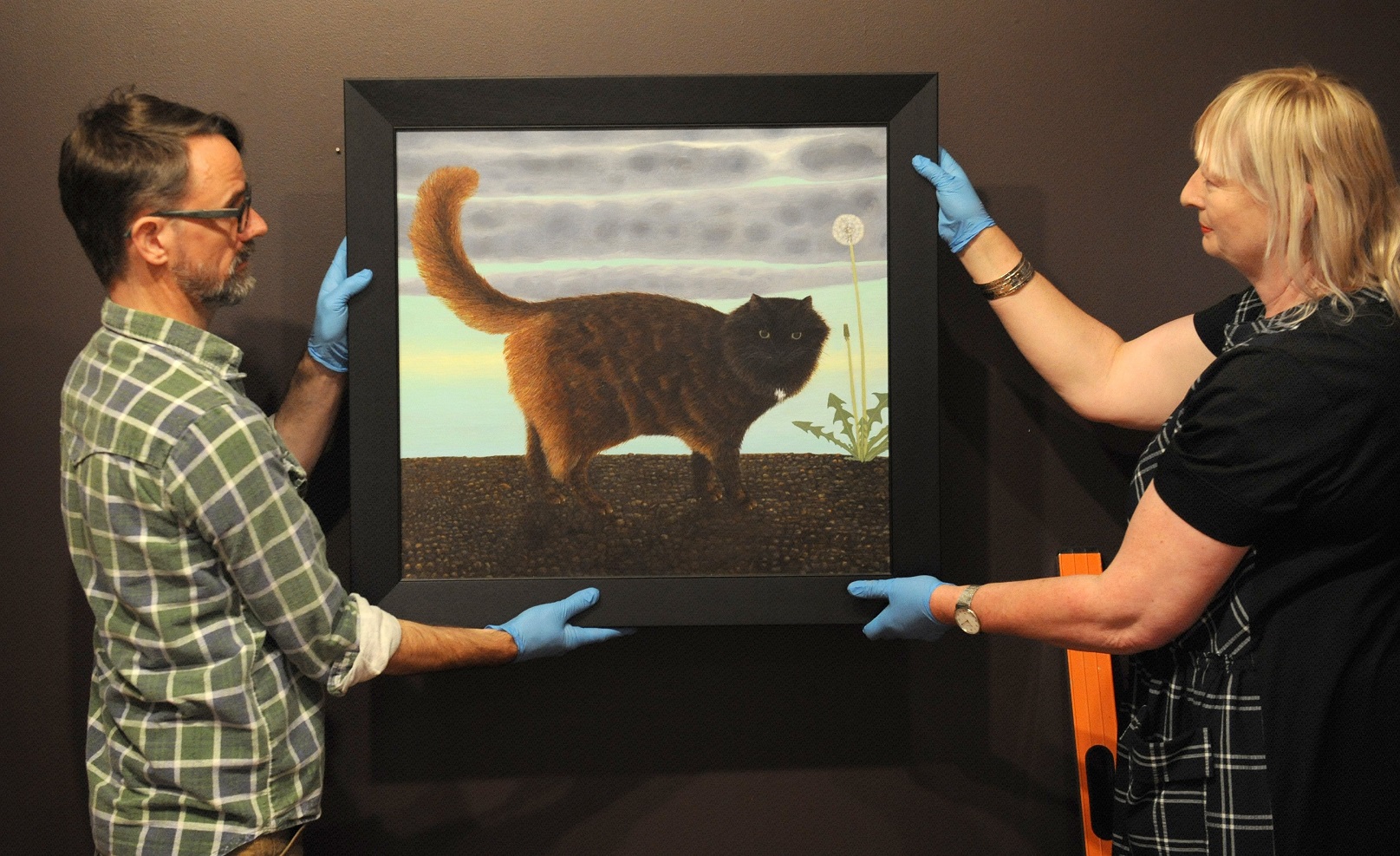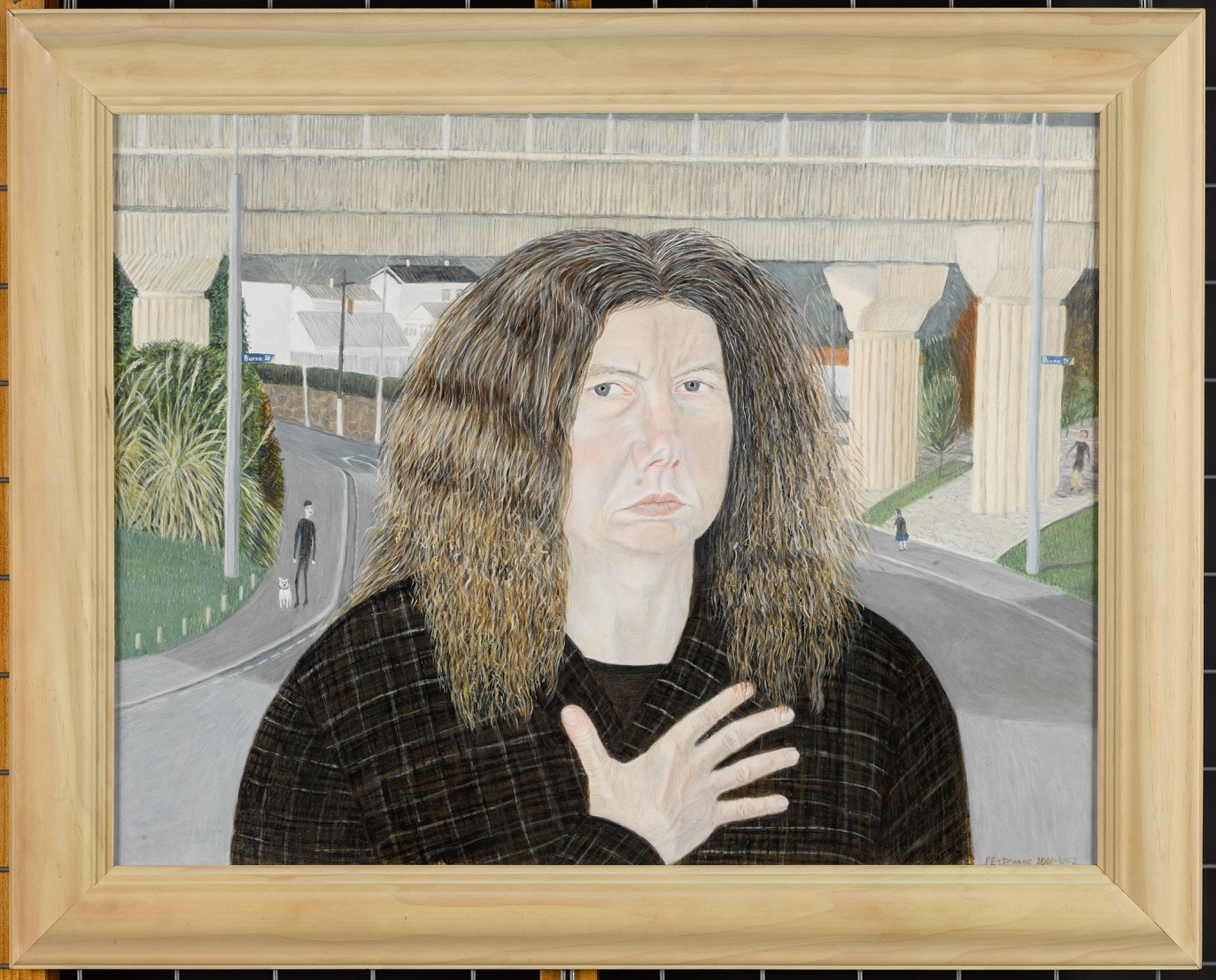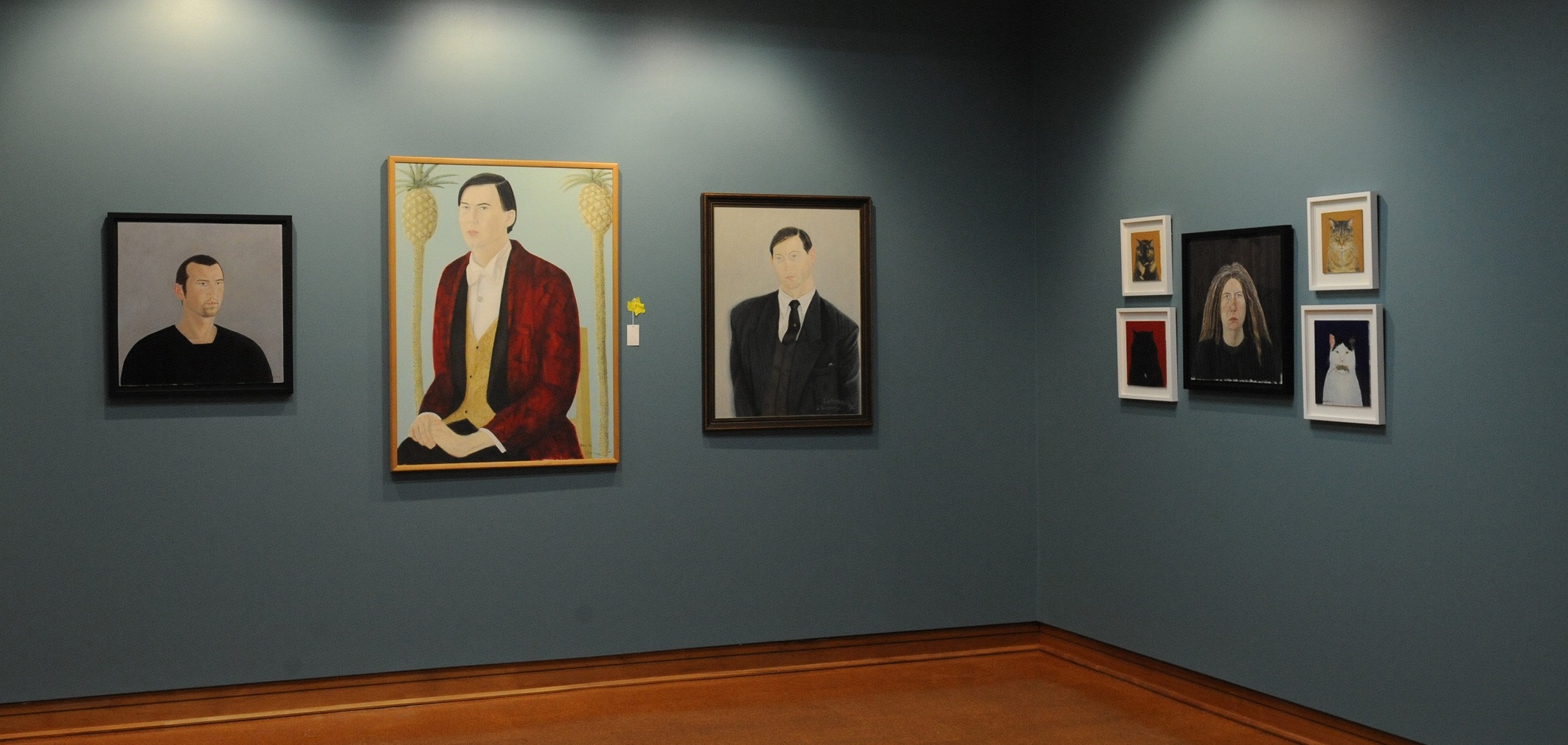
Dunedin artist Joe L’Estrange lets her painting do the talking.
A very private person, L’Estrange loves to paint, and if people like her work, that is a bonus.
It is something Hocken pictures head curator Robyn Notman admires about the painter.
"She is completely engaged in what she is doing and that’s what she is interested in."
Those interests are her environment, especially her garden, cats and the community she lives in, Corstorphine.
"She has very consistent themes that she is interested in but she works on those and paints them in very diverse ways. They are never bland, always energetic and full of potency. She has all these different viewpoints in her art."
Notman, who has met L’Estrange only a few times in person, first came across her work in 1993 when it was included in an exhibition, "Women on Women", commemorating 100 years of women’s suffrage, held at the Dunedin Public Art Gallery, when it was at Logan Park.
All the work in the exhibition was by women, with projects by painters including L’Estrange.
"I thought Joe’s work was distinct and compelling and I’ve always remembered them."
However, it was not until a few decades later in her new job at the Hocken that she came across L’Estrange’s work again.
"I saw some work in the storeroom and was quite fascinated to see it here in the collection. The Hocken had purchased the work in 2016 ."
It appeared that while L’Estrange, who graduated from the Dunedin Art School in 1980, had continued painting over the years and had exhibited at art society shows throughout the South and dealer galleries such as Dunedin’s Moray Gallery and Brett McDowell Gallery, her work had not been included in public exhibitions in a long time.
"Most of her work has gone into private collections. It’s a long time for someone to be producing work and not come under the eye of a public institution. Partly that is because she is such a private person."
The Hocken decided to buy more work by the artist and then developed the idea of curating a solo show of her work "Joe L’Estrange: Painter", which features works from the mid-1980s to 2021.
"Especially to celebrate someone in our local community, it is important to see who is working here. She has been so focused on her work and sustained a practice over a long period of time."

"They all say how much pleasure and enjoyment they get living with Joe’s art and how pleased they are that finally there is an exhibition focusing on her work."
L’Estrange at first was not sure about the idea of the survey exhibition, Notman says.
"But she has become more and more excited about the idea. Now I think she will be quite intrigued to see all the art works brought together. It’ll be fascinating to see Joe’s reaction. I hope she likes the exhibition."
The artist had shown "incredible faith" in the gallery in allowing it to select the works for the show and present it. She told a friend she was surprised at the number of works in the show.
"She is a fascinating personality and it is great to be able to celebrate her."
It is also a rare chance for art lovers to see work from different periods of her life brought together in one place.
"Many people will not have seen these some of these works before and probably won’t see them again because they are privately owned. It’s a real opportunity."
Due to Covid-19 restrictions over the past few years, it meant instead of viewing the pieces in people’s homes, Notman had to make her selections from records, phone conversations and people’s "iPhone photos".
"It’s such strong work you can get a sense of it, a feeling for what you want."
Notman was surprised by the scale of L’Estrange’s work from the largest, a painting about about 2m high named Tree from the 1980s, to smaller A4-sized pieces. It is thought Tree, which is in a private collection in Auckland, was exhibited at the former DPAG as part of its centenary celebrations in 1985.
"It’s quite magical, and it was doubly surprising to find it was in the exhibition all those years ago. She only graduated in 1980 and here it was in a gallery show in 1984."
Another discovery has been a self-portrait of the artist in front of the overbridge at Lookout Point from the artist’s own collection.
"I was surprised and delighted with it. I like how she has painted herself into her place."
Other interesting works include a painting of a black and white wedding photo hanging on a wallpapered wall and one of a golden syrup tin on a formica table.
All of L’Estrange’s works are painted on hardboard, which is carefully prepared by the artist, who also frames or glazes most of her works.

It has required many hours of work by Hocken registrar Victoria France "pulling out all the stops" to get the works to Dunedin for the exhibition in difficult times for delivery networks.
The exhibition highlights the variety of L’Estrange’s work. One room is dedicated to her portraits, many of which are of Dunedin figures from the art world and her own family. Another room features her latest series of works of wild flowers planted in her garden.
"Joe likes to paint things immediately around her, hence the great interest in Caversham, Corstorphine, Concord — all of those parts of Dunedin not often painted but it’s the area of town she lives in and she finds fascinating. She paints what she sees out the windows. She plants gardens and paints the flowers that emerge," Notman said.
Bringing the different works together highlights the artist’s different use of colour and scale and experimentation with pattern.
"She is constantly testing the language of painting to create these artworks."
While her subjects may be simple everyday scenes, the more people look at a work the more they will see, Notman says.
"That’s what I’ve experienced working with Joe’s art. It’s very satisfying; it’s energising in a positive way. It’s lovely to be around."
Many of the works reference artists such as Van Gogh and Matisse and Renaissance paintings.
"You feel she has been looking at lots of artworks and thinking about what other artists have done and yet none of those are overtly evident in her paintings."
Notman is particularly enthusiastic about her more recent flower works which show "incredible choreography" and sense of space. Some are also of her garden at night while others show the garden in high summer full with everyday flowers such as daisies, grasses, irises, cornflowers and marigolds.
"You feel some creature going through the garden. You can’t understate the effect of these paintings and the skill she demonstrates because there is this sense of three-dimensionality as well."
Notman feels there is a revived interest in works which connect people with nature and everyday pleasures. In England, the Garden Museum is holding the first exhibition of Lucien Freud’s paintings of plants and gardens. Freud is most known for painting nudes but is also a prolific painter of plants.
"He was heavily criticised by the art critics at the time for the banal subject matter but now they are relooking at that work."
The Hocken is also planning on publishing a book as a record of the exhibition and L’Estrange’s work. It will include an essay by Wellington art writer Megan Dunn.
TO SEE
"Joe L’Estrange: Painter", Hocken Gallery, November 5












